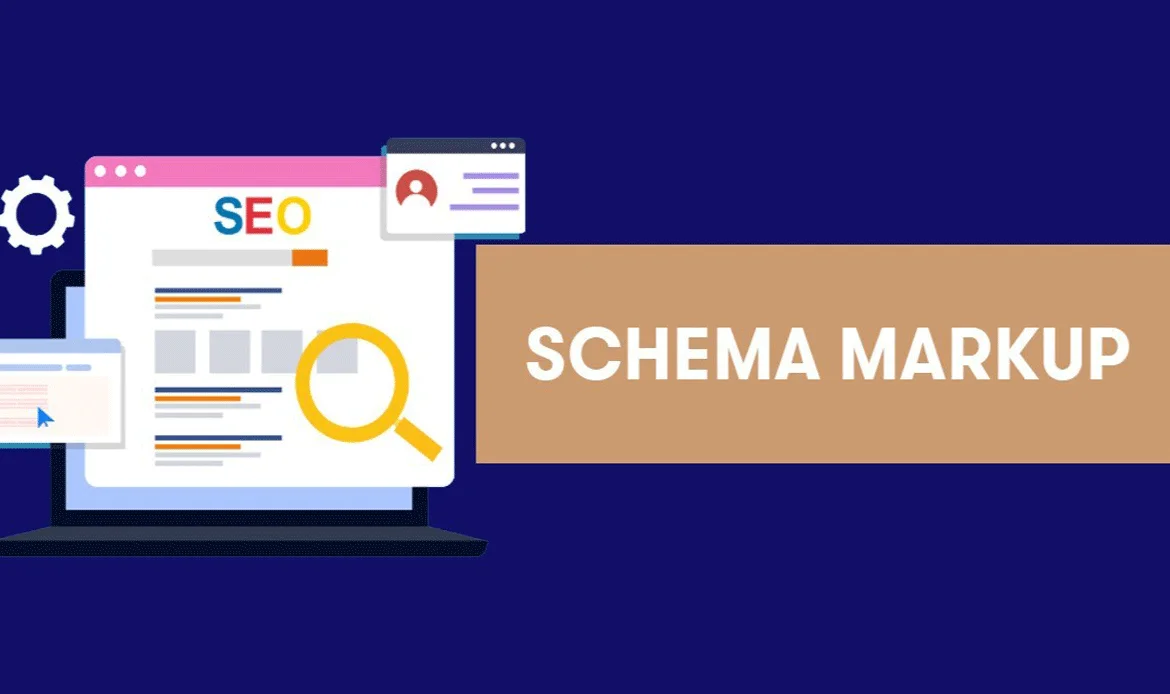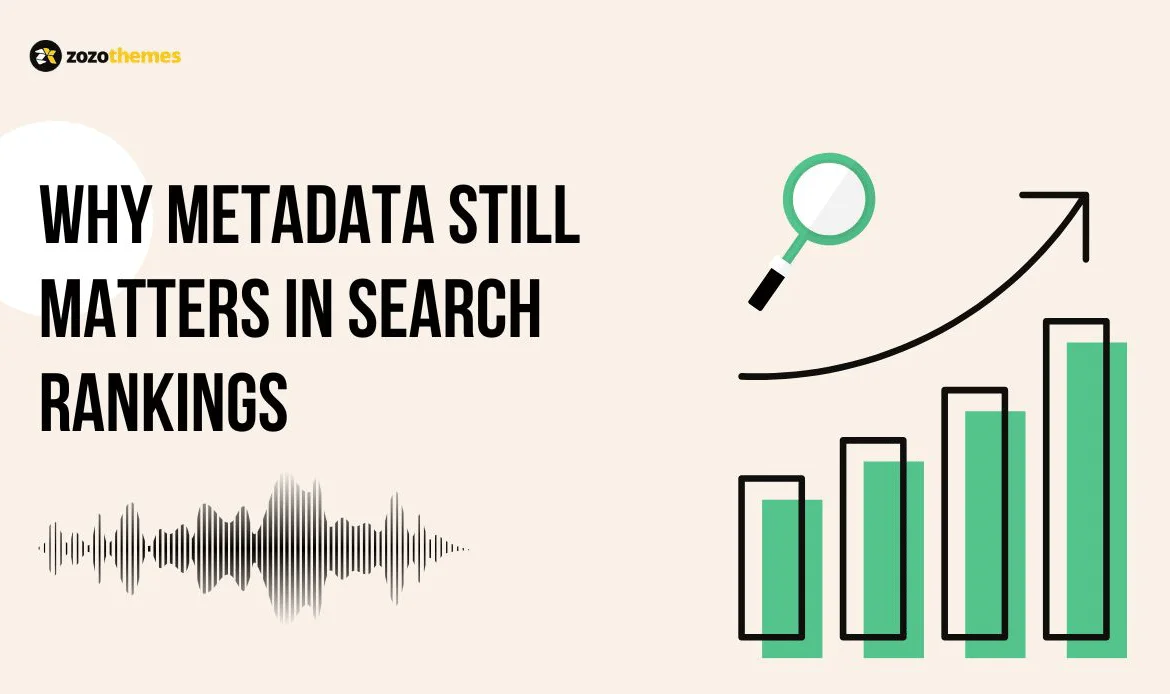1. What Is Schema Markup in SEO?

Schema markup is structured data added to your website’s HTML that gives search engines a clearer understanding of your content. Instead of just crawling text, Google can interpret the meaning behind it. For example, schema tells whether a number is a product price, a review rating, or a phone number. This structured context makes your pages eligible for rich results, improving visibility and user engagement. By clearly defining content, schema eliminates guesswork for search engines and elevates your SEO performance.
2. Why Metadata Still Matters in Search Rankings

Metadata acts as your website’s “billboard” in search engines. Titles, meta descriptions, and image alt tags influence click-through rates (CTR) and user trust. Optimized metadata ensures your pages align with search intent and encourages users to click your result over competitors. Without strong metadata, even the best schema can underperform. Together, they strengthen your SEO ecosystem, ensuring your content not only ranks but also compels users to take action.
3. How Schema Creates Rich Snippets That Drive Clicks

Rich snippets — such as FAQs, star ratings, and event details — are made possible through schema markup. These enhanced search results attract attention, build authority, and boost CTR. Studies show that rich results can increase organic traffic by up to 30%, making schema a critical part of modern SEO. These enhancements make your listing more noticeable, building trust while increasing CTR. For competitive industries, rich snippets can be the deciding factor that sets your website apart from generic search results.
4. Essential Types of Schema for Every Website
 Not all schema is the same. Article Schema is essential for blogs, Product Schema for eCommerce, Local Business Schema for service providers, and FAQ Schema for informational pages. By combining multiple schema types, your site sends stronger signals to search engines and performs better in AI-driven searches. Selecting schema relevant to your niche ensures maximum SEO benefit while enhancing user experience across devices and search platforms.
Not all schema is the same. Article Schema is essential for blogs, Product Schema for eCommerce, Local Business Schema for service providers, and FAQ Schema for informational pages. By combining multiple schema types, your site sends stronger signals to search engines and performs better in AI-driven searches. Selecting schema relevant to your niche ensures maximum SEO benefit while enhancing user experience across devices and search platforms.
5. JSON-LD: The Best Way to Implement Schema

Google recommends JSON-LD (JavaScript Object Notation for Linked Data) as the most reliable and flexible way to add schema markup. Unlike microdata, JSON-LD doesn’t clutter your HTML and can be easily updated. This ensures your structured data stays valid during site redesigns and content updates. Unlike Microdata or RDFa, JSON-LD can be added and updated independently, making it a flexible choice for developers and marketers. Adopting JSON-LD guarantees compatibility with modern search engines and AI-driven features.
6. Metadata Optimization for User Intent

Good metadata balances keyword targeting with readability. A meta title should include the main keyword while also appealing to users (e.g., “Best Running Shoes for Men | Free Delivery”). Meta descriptions should act as mini-advertisements that highlight benefits, CTAs, and value. This ensures both search engines and users see your content as relevant. Incorporating natural keywords in titles, descriptions, and alt tags ensures higher visibility in both organic search and image search results.
✔ Schema Markup Strategy for Smarter Meta Titles
A meta title should capture both the target keyword and the user’s intent. For example, instead of just “Shoes Online,” use “Buy Running Shoes Online | Free Delivery.” This approach balances SEO with conversion-driven messaging.
✔ Boost CTR with Schema Markup Strategy in Meta Descriptions
Meta descriptions act like mini advertisements. They should highlight benefits, include a call-to-action (CTA), and use natural keywords. For instance: “Shop organic honey with free shipping. 100% pure, natural, and delivered fresh.”
✔ Schema Markup Strategy to Match User Search Intent
Users search with different goals — informational, navigational, or transactional. Metadata must match that intent. Informational pages should emphasize answers, while product pages should highlight offers and urgency.
✔ Using Keywords Naturally with Schema Markup Strategy
Avoid keyword stuffing. Instead, place the main keyword in the meta title and a variation in the description. This makes metadata search-friendly while staying reader-friendly. Instead of forcing terms, aligning them with content types like articles, products, or FAQs helps search engines connect relevance with authenticity.
✔ Schema Markup Strategy for Stronger Alt Tag Optimization
Image alt tags often get overlooked, yet they boost visibility in Google Images and improve accessibility. Descriptive alt tags with relevant keywords can drive traffic from visual search engines. This improves both ranking opportunities and user experience across devices.
✔ Improve CTR Through Testing with Schema Markup Strategy
Regularly A/B test different versions of your meta titles and descriptions to see which generates higher CTR. Tools like Google Search Console help track impressions and click-through performance. By experimenting with metadata, schema types, and structured content, you can measure how rich snippets and enhanced listings increase your click-through rates over time.
7. Schema Markup and the Future of AI Search

With the rise of Answer Engine Optimization (AEO) and Generative Engine Optimization (GEO), schema markup is becoming more valuable. AI-driven search engines rely on structured data to pull precise answers. A strong Schema Markup Strategy positions your brand as the source for AI summaries, featured snippets, and voice search queries. This positions your business for long-term visibility in an evolving digital landscape.
8. Common Mistakes in Schema and Metadata Usage

Many websites misuse schema by overstuffing, duplicating, or mislabeling content. Similarly, some businesses leave metadata blank or poorly written. These mistakes can lead to reduced visibility or ranking penalties. Always validate schema and write metadata with clarity, accuracy, and keyword relevance. These errors can cause search engines to misinterpret your content or ignore your schema entirely. Regular audits and proper testing prevent such pitfalls and ensure your SEO efforts deliver results.
9. Best Tools for Testing Schema Markup

Tools like Google Rich Results Test, Schema.org Validator, and Screaming Frog SEO Spider help ensure your markup is working correctly. Regular testing helps prevent errors such as missing attributes or invalid schema, both of which could stop rich snippets from appearing in search. Validation eliminates errors, confirms compatibility with search engines, and provides insights into possible improvements. Consistent testing ensures your markup remains effective as algorithms evolve.
10. The Future of HTML SEO Power

The next phase of SEO will prioritize context, semantics, and structured data. As AI-generated search results grow, schema and metadata will decide which content gets surfaced. Businesses that embrace schema markup now will have a strong advantage in voice search, mobile-first indexing, and AI-powered SERPs. Businesses that master schema and metadata today will gain long-term SEO power and a competitive edge tomorrow.
Schema SEO Power: Expert FAQs You Need to Know
1. What is schema markup in SEO?
Schema markup is a type of structured data added to HTML that helps search engines understand your content better. It improves visibility, enables rich snippets, and boosts click-through rates.
2. How does metadata support schema markup?
Metadata (titles, descriptions, and alt tags) provides context that complements schema. Together, they improve rankings, user engagement, and search intent matching.
3. Why is JSON-LD recommended for schema implementation?
JSON-LD is Google’s preferred format because it’s clean, flexible, and doesn’t interfere with your site’s HTML design, making it easier for developers to update.
4. What are the best schema types for websites?
Common schema types include Article, Product, Local Business, Event, and FAQ Schema. Choosing the right schema depends on your website goals.
5. What mistakes should I avoid with schema and metadata?
Avoid keyword stuffing, duplicate schema, and irrelevant metadata. Always validate your markup with Google’s Rich Results Test to ensure compliance.
Conclusion
In today’s fast-changing search landscape, Schema Markup Strategy is no longer optional — it’s a necessity for businesses that want to thrive online. By leveraging schema markup and optimizing metadata, you can transform simple HTML elements into powerful SEO signals that drive visibility, trust, and conversions. Websites that invest in structured data today will enjoy long-term benefits, staying ahead of competitors while adapting seamlessly to AI-powered search engines.Unlock Hidden HTML SEO Power Today
Boost your website visibility instantly! Our SEO-optimized WordPress themes harness the hidden power of clean HTML structure to help your site rank higher and load faster.


